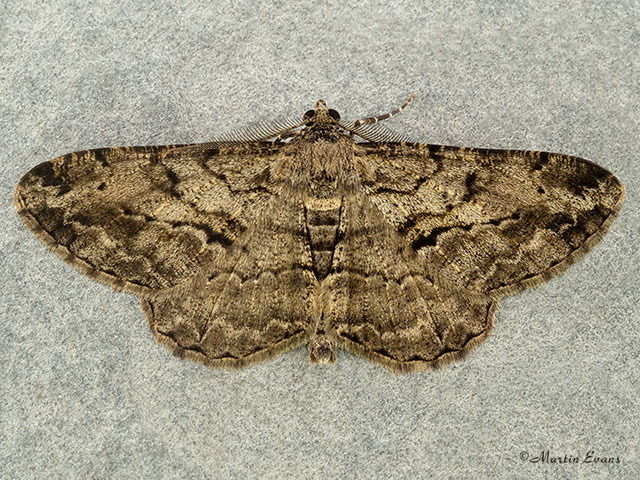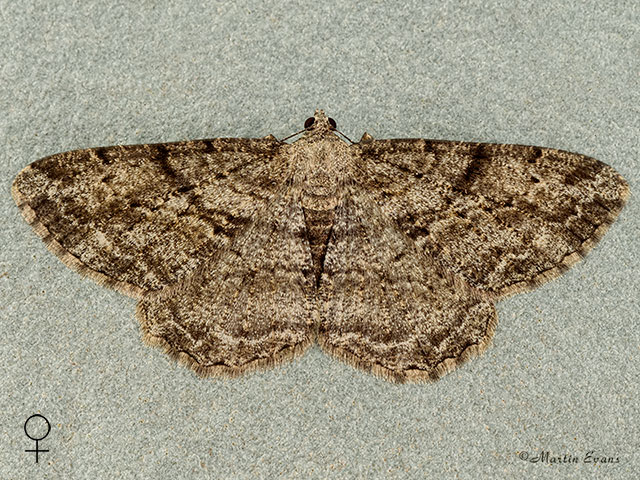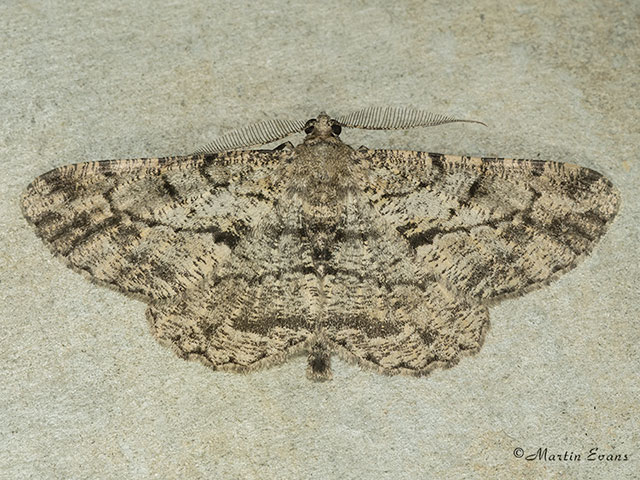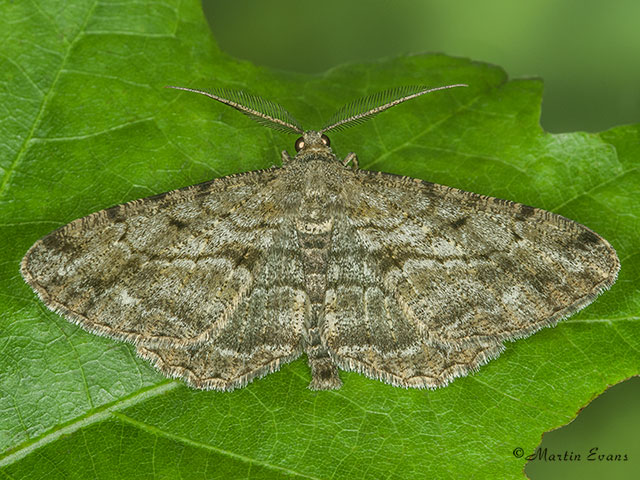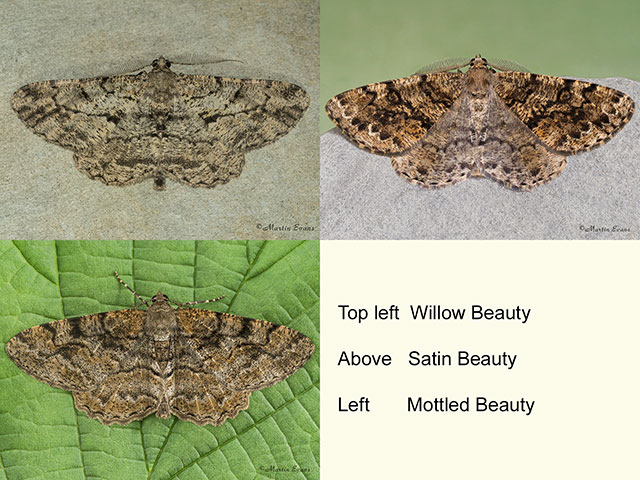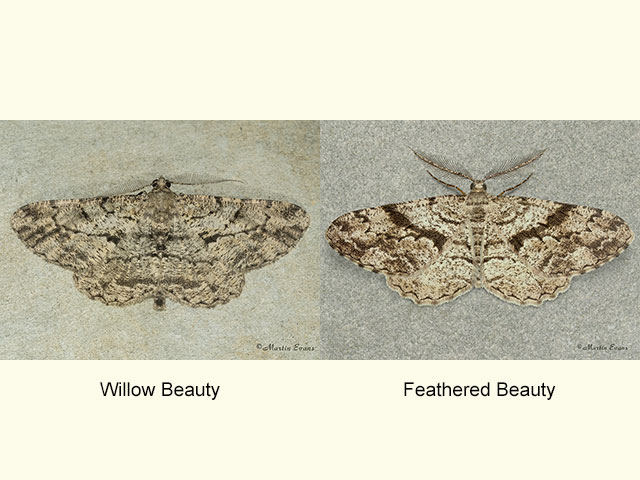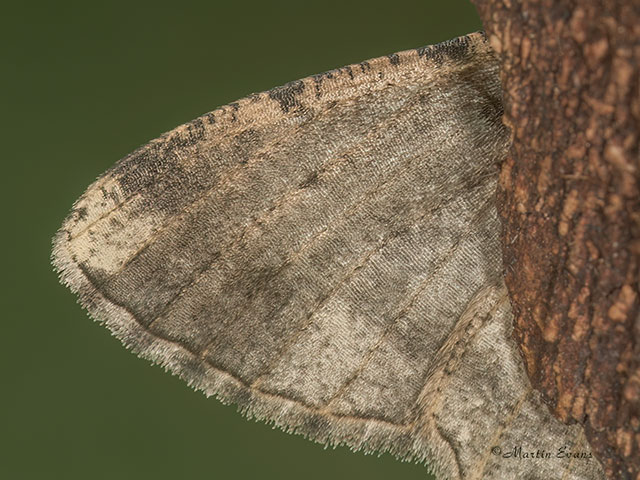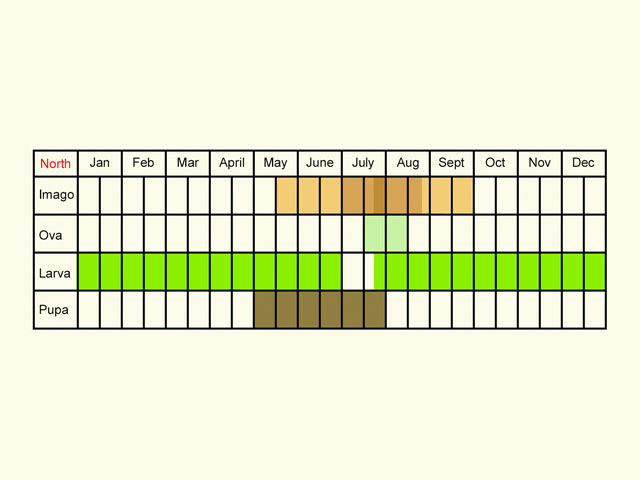Geometridae
70.258 Willow Beauty Peribatodes rhomboidaria ([Denis & Schiffermüller], 1775)
Common
Similar species: Satin Beauty Deileptenia ribeata has a more rounded forewing with a prominent, scalloped outer cross-line often filled with black scales and a more outward bowed outer cross-line on the upperside of the hindwing.
Mottled Beauty Alcis repandata has narrower antennae and two smooth outward curves in the outer central cross-line.
Feathered Beauty Peribatodes secundaria is on average smaller (17 to 20mm) and has more contrasting markings. It has broader antennae with a shorter length without feathering at the tip. The forewing outer central cross-line bows less in the centre, so kinks inward less abruptly towards the leading edge.
The rare migrant Olive-tree Beauty Peribatodes umbraria has a whitish background colour and a large dark blotch between the central cross-line and the outer central cross-line at the trailing edge.
The rare migrant Lydd Beauty Peribatodes ilicaria has slightly less broad antennae, the forewing outer cross-line bows outwards towards the trailing edge, the pale square on the underside of the wing tip may be present and the outer cross-line on the hindwing is considerably bowed outwards.
Forewing: 17 to 24mm
Habitats: Deciduous and mixed woodland, parkland, scrub, hedgerows, amenity planting and gardens.
Habits: The moth comes to light. It nectars at thistles and Common Ragwort after dark.
Foodplant: The larva feeds on Hawthorn, plums, Garden Privet, Ivy, Alder Buckthorn, Downy Birch, Silver Birch, gorse, Traveller's-joy and other broadleaved trees and shrubs. Also Yew and conifers including, Scots Pine, Monterey Cypress and Norway Spruce. It pupates in a cocoon attached to the foodplant or in the leaf litter.
